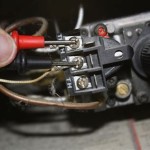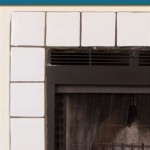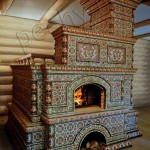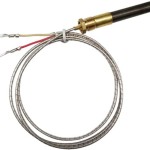Homemade Fire Starters For Fireplace
Starting a fire in a fireplace can be a rewarding experience, providing warmth and ambiance to a home. However, the initial stages of fire-starting can sometimes be challenging, particularly when relying solely on kindling and conventional methods. Homemade fire starters offer a practical and often cost-effective alternative, utilizing readily available materials to facilitate the ignition process. This article explores various methods for creating homemade fire starters, outlining the materials required and the steps involved in their construction. The focus is on presenting clear and informative instructions to enable readers to create effective fire starters for their fireplaces.
Wax and Sawdust Fire Starters
One of the most common and effective methods for creating homemade fire starters involves the combination of wax and sawdust. This approach leverages the flammability of wax and the increased surface area provided by sawdust to produce a sustained flame suitable for igniting kindling. The type of wax used can vary, with options including paraffin wax, beeswax, or even recycled candle remnants. Sawdust can be sourced from woodworking projects or obtained from local lumberyards.
The preparation process begins with gathering the necessary materials: wax, sawdust, and a container for molding the fire starters. Suitable containers include muffin tins, small paper cups, or even egg cartons. The wax must first be melted. This can be accomplished using a double boiler or a dedicated wax melting pot. Caution should be exercised during this step, as melted wax is flammable and can cause severe burns. Direct heating of the wax on a stovetop is generally discouraged.
Once the wax is fully melted, the sawdust should be gradually incorporated into the liquid wax. The ratio of wax to sawdust can be adjusted based on preference, but a general guideline is to aim for a mixture that is thick enough to hold its shape but not so saturated that it becomes difficult to ignite. The mixture should be stirred thoroughly to ensure that the sawdust is evenly distributed throughout the wax.
After the sawdust and wax are properly mixed, the mixture should be carefully poured into the chosen containers. It is important to avoid overfilling the containers, as the wax will expand slightly as it cools. The filled containers should then be allowed to cool and solidify completely. This process typically takes several hours, depending on the ambient temperature and the volume of the fire starters. Once the fire starters have fully solidified, they can be removed from their containers and stored in a dry, cool place until needed.
To use a wax and sawdust fire starter, simply place it beneath a pile of kindling in the fireplace. Light the edge of the fire starter with a match or lighter. The wax will burn slowly and steadily, providing ample time for the kindling to catch fire. The sawdust will help to distribute the flame and create a larger surface area for ignition.
Cotton Ball and Petroleum Jelly Fire Starters
Another readily accessible method for creating homemade fire starters involves the use of cotton balls and petroleum jelly. This method is particularly advantageous due to the simplicity of the materials and the ease of preparation. Cotton balls serve as a highly flammable medium, while petroleum jelly provides a slow-burning fuel source that allows the cotton to maintain a flame for an extended period.
The required materials are simply cotton balls and petroleum jelly. The preparation process is straightforward: each cotton ball should be thoroughly coated in petroleum jelly. This can be achieved by smearing petroleum jelly directly onto the cotton ball, ensuring that the entire surface is covered. An alternative approach is to place a quantity of petroleum jelly in a small container and then roll the cotton balls in the petroleum jelly until they are fully saturated.
The key to creating effective cotton ball and petroleum jelly fire starters is to ensure that the cotton is completely impregnated with the petroleum jelly. This will allow the fire starter to burn for a longer duration and provide a more reliable flame. Once the cotton balls have been coated, they can be stored in an airtight container to prevent them from drying out or attracting dust and debris.
To use a cotton ball and petroleum jelly fire starter, simply pull apart the cotton ball slightly to expose some of the dry cotton fibers. Light the exposed cotton fibers with a match or lighter. The petroleum jelly will ignite and burn slowly, providing a sustained flame that is ideal for igniting kindling. These fire starters are especially useful in damp or windy conditions, as the petroleum jelly helps to protect the flame from being extinguished.
Egg Carton and Wax Fire Starters with Various Fillings
Egg carton fire starters offer a versatile and environmentally friendly method for creating fire starters. This approach involves repurposing cardboard egg cartons and filling them with a variety of flammable materials, such as dryer lint, wood shavings, or shredded paper. The egg carton itself acts as a container and a source of fuel, while the fillings provide additional flammability and surface area.
The required materials include cardboard egg cartons, wax (similar to the wax and sawdust method), and a selection of flammable fillings. Dryer lint is a readily available and highly effective filling, as it is composed of fine fibers that ignite easily. Wood shavings, collected from woodworking projects, also provide excellent flammability. Shredded paper, particularly newspaper or cardboard, can be used as a filler, but it may produce more ash than other options.
The preparation process begins by melting the wax, as described in the wax and sawdust method. While the wax is melting, the egg carton should be prepared by filling each of the individual egg compartments with the chosen flammable materials. The compartments can be filled with a single type of material or a combination of different materials. For example, one compartment could be filled with dryer lint, while another could be filled with wood shavings.
Once the egg carton compartments are filled, the melted wax should be carefully poured over the fillings. The amount of wax used will depend on the volume of the fillings, but the goal is to saturate the fillings with wax without completely submerging them. The wax will help to bind the fillings together and provide a sustained fuel source.
After the wax has been poured, the egg carton should be allowed to cool and solidify completely. Once the wax has solidified, the individual egg compartments can be separated into individual fire starters. To use an egg carton fire starter, simply place it beneath a pile of kindling in the fireplace. Light the edge of the egg carton and allow the wax and fillings to ignite. The cardboard of the egg carton will also contribute to the flame, providing additional fuel and heat.
The advantage of egg carton fire starters is their versatility. The type of fillings used can be adjusted based on availability and preference. Furthermore, egg carton fire starters are relatively easy to store and transport, making them a convenient option for camping or outdoor activities.
Beyond the core ingredients, additional elements can be incorporated to enhance the performance and longevity of homemade fire starters. For instance, dried herbs such as rosemary or pine needles can be added to wax-based fire starters to provide a pleasant aroma when burning. Small pieces of cotton fabric or jute twine can be embedded in the wax mixture to act as a wick, facilitating easier ignition. The dimensions of the fire starters can also be customized to suit specific needs, with larger fire starters providing longer burn times and smaller fire starters offering greater portability.
Safety considerations are paramount when handling flammable materials and working with open flames. Always exercise caution when melting wax, ensuring adequate ventilation and avoiding direct contact with the heat source. Store fire starters in a safe and secure location, away from children and pets. When igniting fire starters in a fireplace, ensure that the damper is open and that the fireplace is properly ventilated. Never leave a burning fire unattended, and always have a fire extinguisher or other fire suppression equipment readily available.
The ability to create effective fire starters from readily available materials can be a valuable skill, particularly in situations where commercial fire starters are not readily accessible or when a more sustainable and environmentally friendly option is desired. By following the methods outlined in this article, individuals can confidently create a variety of homemade fire starters that will reliably ignite kindling and facilitate the creation of a warm and inviting fire in their fireplaces.
The creation and use of homemade fire starters present a practical approach to managing household waste. Dryer lint, a common byproduct of laundry, is often discarded but can be effectively repurposed as a flammable component in fire starters. Similarly, cardboard egg cartons, which are typically recyclable, can be given a second life as containers and fuel sources for fire starters. By incorporating these waste materials, individuals can reduce their environmental impact and contribute to a more sustainable lifestyle. Moreover, the ability to utilize readily available resources reduces reliance on commercially produced fire starters, saving money and minimizing the need for resource extraction and manufacturing processes.
Homemade fire starters, while offering numerous advantages, should be approached with a degree of awareness regarding their composition and potential environmental impact. While natural materials such as sawdust and cotton are biodegradable, the combustion of petroleum-based products like paraffin wax and petroleum jelly can release harmful emissions into the atmosphere. Therefore, it is advisable to explore alternative, more environmentally friendly options whenever possible. Beeswax, a natural byproduct of honey production, offers a sustainable alternative to paraffin wax. Similarly, vegetable-based oils and waxes can be used in place of petroleum jelly. By carefully selecting the materials used in homemade fire starters, individuals can minimize their environmental footprint and promote a more responsible approach to fire-starting.

17 Homemade Diy Fire Starters You Can Make That Actually Work

Homemade Fire Starters 3 Ways To Make Them The Art Of Doing Stuff

8 Simple Homemade Fire Starters An Off Grid Life

17 Homemade Diy Fire Starters You Can Make That Actually Work

17 Homemade Diy Fire Starters You Can Make That Actually Work

Homemade Fire Starters 3 Ways To Make Them The Art Of Doing Stuff

Diy Fire Starters Only Requires Two Unexpected Items Blessed Beyond Crazy

How To Make The Best Diy Homemade Fire Starters Made In A Pinch

Pinecone Fire Starters Diy Stonegable

Make Your Own Fire Starters Frugal Family Home








